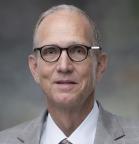
John H. Calhoon, MD
STS News, Spring 2022 — These words from my mentor, Dr. J. Kent Trinkle, truly infuriated me as a young, often too mercurial, and impetuous resident and faculty member. So much needed to be changed and it seemed (to me) the only way to make it happen was by force.
With much time, his words and wisdom have begun—though not fully yet—to sink in.
The Challenges Ahead
The cardiothoracic surgery specialty continually faces challenges, all of which are best viewed as opportunities. Most recently, our adult cardiac brethren have been confronted with guidelines for the treatment of coronary disease which simply missed the mark. Our general thoracic colleagues are repeatedly confronted by less invasive ablative techniques offered by radiology, bronchoscopy, and the like. The kiddie heart teams, and valve and aortic disciplines, also face similar emerging technologies.
Fortunately, STS, through a wonderful network of volunteer surgeons and a robust staff, does its best to address these challenges daily.
It has been a wonderful experience to watch as Dr. Sean Grondin deftly navigated these challenges with the STS team this past year. I’ve learned from him and so many of our leaders throughout my career.
Now, with the help of Drs. Tom MacGillivray, Jenna Romano, Wilson Szeto, Vinod Thourani, and the rest of the Board of Directors, it is my honor and pleasure to take the helm of the organization for a short time. For that, I am very humbly grateful.
All of us learned a great deal from Dr. Joe Sabik and continue to call on him for support and insights from his 6 years of service as STS Secretary and 5 additional years on the STS Board. I am particularly grateful to Dr. Sabik for agreeing to chair the STS Workforce on Evidence Based Surgery, as he has great knowledge and experience in this area.
The Decision to Go Virtual
Congratulations to Dr. John Mitchell for a successful annual meeting in January. When Omicron could not be ignored, the decision to go virtual was made, and the STS 58th Annual Meeting was developed in just 3 weeks.
Dr. Grondin made a wonderful call to have a 2-day meeting, with a tight, efficient schedule that made the meeting as enjoyable and accessible as I can ever remember. This proved to be the perfect “fit” for the situation.
Principles and Process behind Guidelines
As this year unfolds, the challenges we face continue to evolve, but the solutions remain much the same. We will address the process by which guidelines are created. It should be by asking for the best experts available to look at the best evidence, while keeping our patients in mind.
With an ever-increasing overlap in surgical treatment and medical/interventional treatment of cardiac and thoracic diseases, STS and any guideline processes need to remain focused on what is best for the patients, not for a particular technique or discipline.
While STS and the American Association for Thoracic Surgery (AATS) were involved in the development of the 2021 Guideline for Coronary Artery Revascularization, the organizations withdrew their support due to concerns about the interpretation of scientific evidence and challenges related to the guideline development process.
The process for writing what we believe were failed coronary disease “guidelines” (I still consider them recommendations) is being examined by STS and our AATS colleagues. We also have the unanimous, unsolicited support from the European Association for Cardio-Thoracic Surgery (EACTS) and other global cardiac surgical societies.
The principles by which guidelines should be created are: using best evidence, removing bias from their interpretation, and fielding solid expert teams. Many of the global surgical societies are aligned on this coronary disease guideline opportunity and we should all collaborate to address it. There is a great faith that we can get this right with time. We must.
What Is Happening at STS
STS is doing some impactful things. CEO Elaine Weiss has begun to enhance the STS team. She has added Charlie Simpson as Senior Vice President of Marketing and Communications. He joins Bill Seward and Grahame Rush in the senior leadership team.
Elaine also has begun to implement some of the organizational changes provided from a special Presidential task force that was started by Dr. Grondin. Led by Drs. Richard Prager and Doug Mathisen, the Task Force on Governance has offered operable suggestions and a modified organizational chart to make the Society more efficient and productive.
As we are hopefully emerging from COVID for the last time, the ability of and need for STS to refocus on key services for us—the surgeon members—has never been greater.
Over the next few months, we will be looking hard at the STS National Database to continue its evolution. It should be easier to enter data, more malleable to our needs, and in my humble opinion, it must begin to capture longer term data. It is the long-term data that differentiate surgical treatment from all others. We must figure out how to highlight that.
A productive educational retreat was held last summer, and there are many initiatives that we can begin to stage and address. Likewise, the STS advocacy arm remains crucial to the specialty, so we will continue to leverage our data and voice in Washington, DC.
Similarly, the opportunity for collaboration on a global scale is present. We are excited about the EACTS annual meeting in Milan this October and look forward to partnering with EACTS on other international meetings as well.
One of my late heroes, Dr. Alfonso Chiscano always signed his notes with “More to come.” So in his honor, “More to come.”
In Memoriam
The cardiothoracic surgery community recently lost one its revered leaders: Dr. Marian Zembala. This internationally renowned cardiac surgeon—a past president of EACTS and former Health Minister of Poland—was known for his humility and passion. He will be greatly missed.